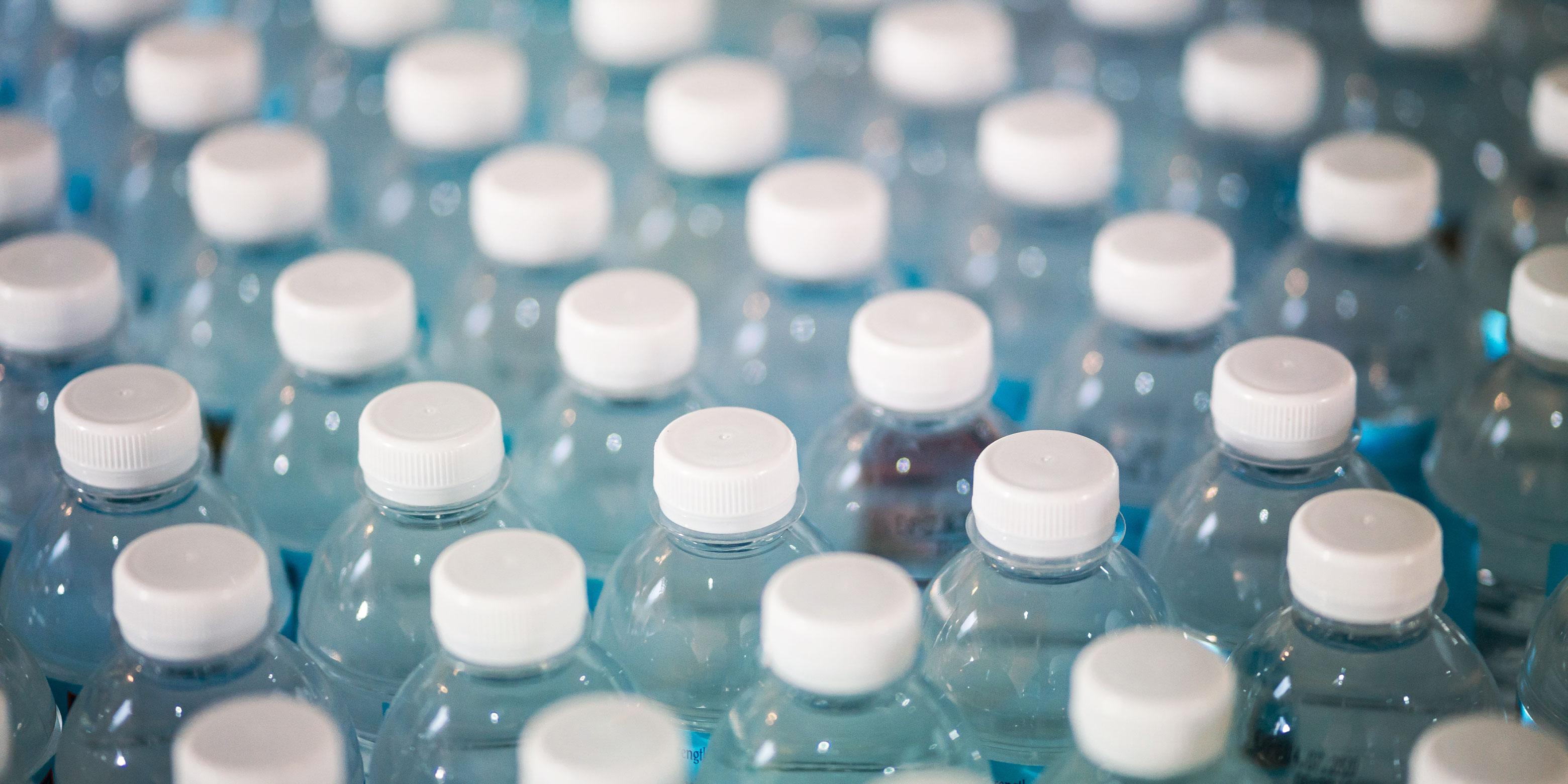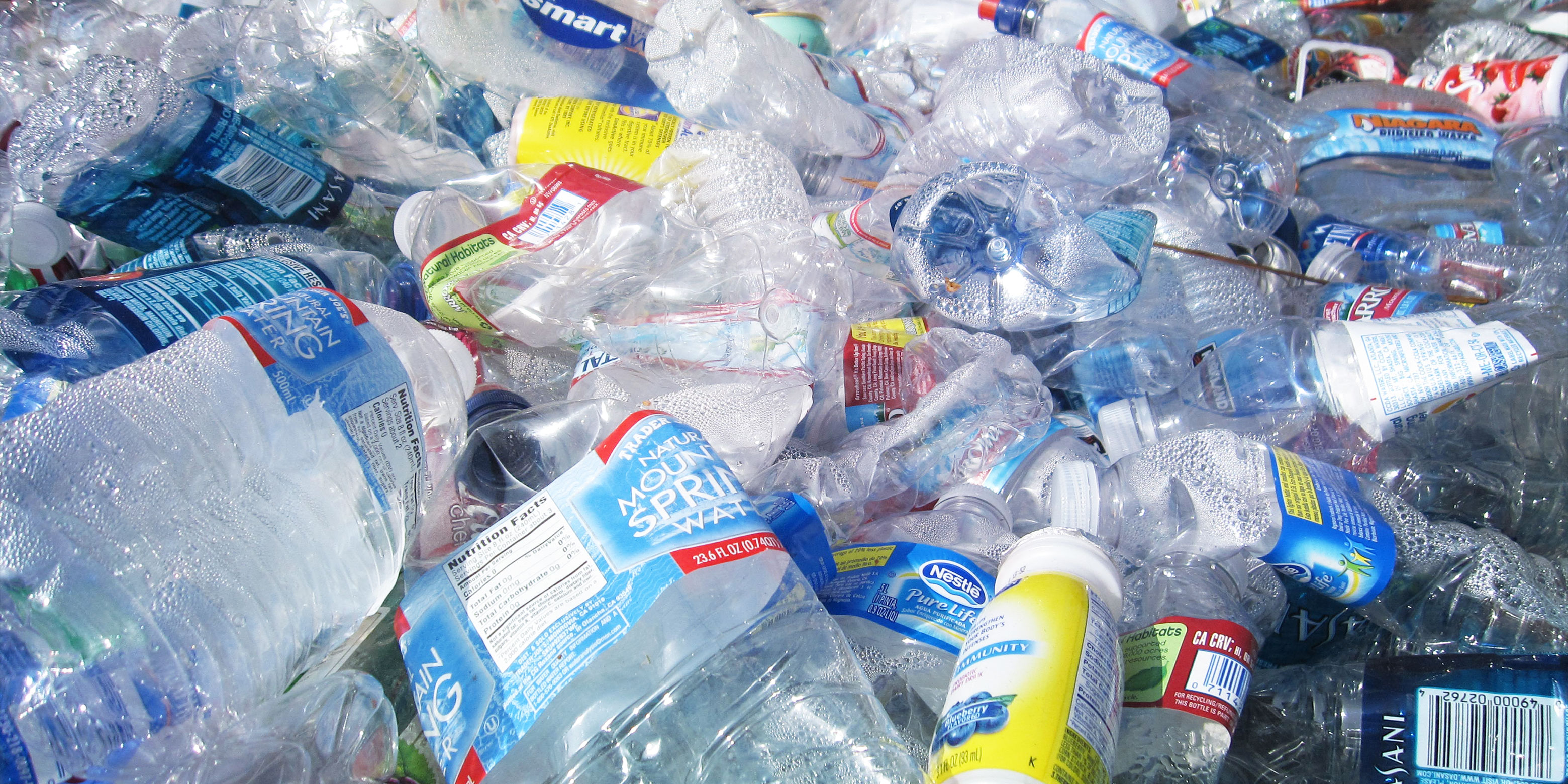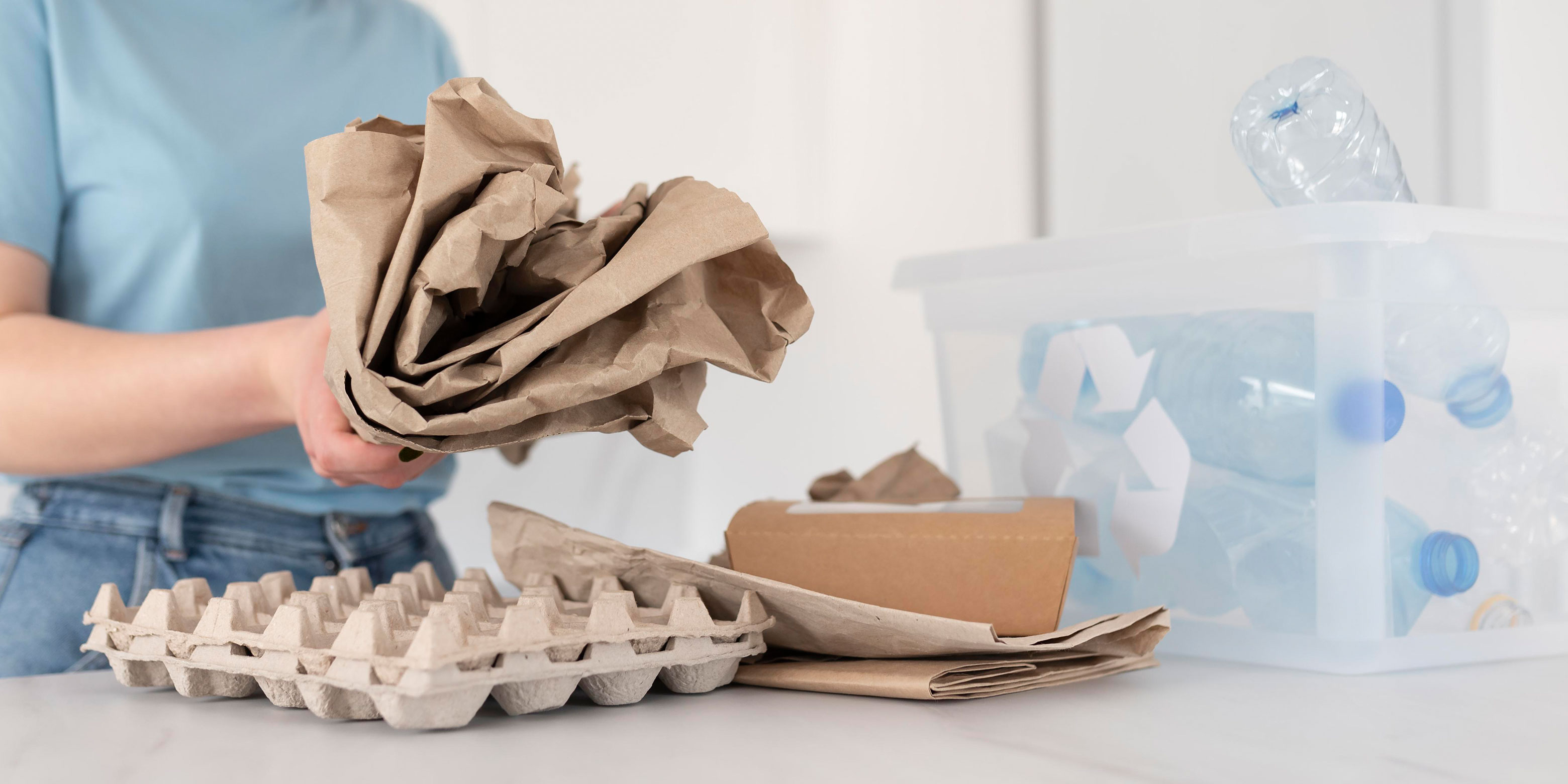KNOWLEDGE
How to Overcome Sustainable Packaging Challenges
The demands for sustainable packaging have increased among consumers in 2022. About 86% of people are willing to pay more for their products if the items are in recyclable, reusable, or refillable packaging, according to PR Newswire. In addition to the growth in demand, many state governments as well as countries are implementing regulations that require companies to move to sustainable practices.
While consumer demand is high and manufacturers want to remain in compliance with regulatory bodies, companies are facing unique sustainable packaging challenges on how to modify their processes to meet demand without hampering their productivity levels.Let’s dive into what these challenges are and how you can overcome them.

What is Sustainable Packaging?
Sustainable packaging is a broad term applied to different types of materials or methods used to decrease the amount of packaging that enters the environment as plastic waste. Sustainable solutions for packaging may involve raw materials that can be recycled or refilled such as aluminum bottles which are 100% recyclable. It may also involve using fewer materials to package products. Compostable packaging designed to fully decompose into the soil is also considered sustainable packaging.
Why is Packaging an Issue for Sustainability?
Much of the packaging used today consists of plastic. In the U.S. alone, we produced over 35.7 million tons of packaging in 2018. However, only about 5% to 6% of plastic packaging becomes recycled into new products or other packaging. The majority of this packaging ends up in landfills or water sources, harming the environment. Plastics take anywhere from 20 to 500 years to decompose. It also clogs waterways, contaminates food and potable water, and harms wildlife. Reusable plastics can only go through the recycling process 2-3 times. Afterward, the plastic is too degraded to undergo anymore recycling. All these problems contribute to climate change and increase the carbon footprint for both consumers and companies.
Additional challenges with recycling is the recycling system which cannot accommodate the complex composition of every material especially if the packaging is built with multiple material types. For example, closures are notorious for slipping into landfill because caps are often a different type of plastic than the container. Caps also commonly have an inner seal or liner made from another material such as pulp or foam which is too difficult to remove when recycling. Some types of plastics cannot be recycled and can even contaminate the recycling stream. Other factors such as color can affect the sorting system’s ability to correctly identify the material for sorting, and instead send these types of packaging to landfill.
However, plastics have become a very popular packaging material for companies. Plastic is lightweight, which lowers transportation and fuel costs when shipping products. Due to how much plastic is manufactured, it is more readily available. Plastic packaging is versatile and can be used for a wide variety of products in various industries from chemicals to food. Production lines built to accommodate plastic packaging equipment and processes would be difficult to immediately replace.

What Are the Challenges and Solutions Related to Sustainability and Packaging?
Companies face a number of challenges in introducing sustainability in their packaging processes. The types of issues can be industry specific, such as food or chemical companies requiring packaging suitable for their products. The following are several challenges to understand about sustainable packaging.
Consumer Expectations
Challenge: While consumers are willing to spend more on sustainability, companies need to find a balance between raising prices without overvaluing the product. Consumers want value for their money and may shop elsewhere if the product prices are too high. Also, companies must understand the types of sustainability that consumers want with their products. If a customer is not willing to reuse the packaging or make sure it gets recycled, then the packaging still ends up in the landfill.
Solution: Conducting research with your consumer base allows you to determine current trends and discover their willingness to accept sustainability packaging methods. You may find out if they have a preference in what types of sustainable packaging they would use and how much they are willing to pay for it. You can also provide instructions on how to reuse the product packaging, which would further encourage customers to reuse and recycle items.
Protecting Goods
Challenge: Sustainable packaging solutions must protect the products during their movement throughout the supply chain. Unfortunately, not all packaging is right for every product. The packaging may be too fragile, absorb odors, or negatively interact with the item’s materials. When the product arrives to the consumer, they may find the packaging damaged along with the product. They could also find pieces of the packaging in the item, which can be dangerous for products that are consumed or applied to the skin.
Solution: Companies can perform product testing with sustainable packages to determine whether the packaging will withstand the rigors of transportation and delivery. Testing can also focus on how the products interact with the packaging. If a problem arises where the packaging becomes degraded from the item, or transfers odors or tastes to the product, it may be necessary to switch to another type of sustainable packaging. Another option is to use packaging that contains a liner to ensure the outer packaging does not come in contact with the product.
Durability and Lifecycle
Challenge: Sustainable packaging may look strong when the product is packaged. However, products may remain in warehouses or store shelves for extended periods of time. The packaging could begin to break down over time. Durability is important for packaging that consumers will reuse and refill after use. If you promote that the package is reusable, yet the packaging falls apart after several uses, consumers may distrust your brand.
Solution: Choose sustainable packaging that has a long lifecycle if you intend for the customer to reuse it. Packaging made from glass or metal has a long lifecycle and is durable. When handled with care, both materials can last for years and be reused for various applications. Once the consumer no longer needs the packaging, they can still recycle it.
Costs
Challenge: Companies may cite cost prohibitions for avoiding sustainable packaging methods. They have to consider replacing current packaging methods in operations to use other types of sustainable materials. This switch-out may increase production costs, packaging supply expenses, and labor costs. They may also experience higher transportation costs due to the weight of the sustainable materials, such as glass and metal that can weigh more than fiber or plastic.
Solution: The market for sustainable packaging materials is vast. You may find packaging that can decrease your shipping costs by decreasing product weight, such as fiber and bamboo. Working with a packaging (stock) distributor allows you to access a range of packaging materials at various price points. With their expertise, they can provide insight to help you compare the benefits and drawbacks of different packaging options. By working with a network of suppliers, distributors can quickly identify suppliers to offer customizable packaging solutions within your budget parameters.
New Packaging Laws Being Introduced
Companies may find that they have a shorter time to enact sustainable packaging methods. The United States and other countries have introduced or passed regulations requiring companies and packaging producers to offer packaging that is recyclable or compostable. Two specific regions with such laws are California and the United Kingdom.

California New Plastic Law
In 2022, the California governor signed a new law designed to reduce the amount of single-use plastic that enters landfills and waterways. The CA SB 54, Plastic Pollution Prevention and Packaging Producer Responsibility Act targets packaging producers to make plastic products more recyclable and compostable. The law will work in increments based on a specified deadline and create a 3rd-party producer responsibility organization (PRO). The PRO will operate collection and recycling programs that are overseen by the state.
Producers who create single-use plastics for packaging will need to make the material 30% reusable, recyclable, or compostable by the year 2028. By 2030, the California Plastic law will require that plastic packaging be 40% reusable, recyclable, or compostable and by 2032 the packaging must reach a 65% sustainability rate.
The new California Plastic Law shifts the burden of sustainable packaging from the consumers and places it on plastic producers. It also requires the plastic industry to raise $5 billion over the next 10 years to reduce and eliminate single-use plastic packaging.
UK Plastic Packaging Tax Legislation
The UK Plastic Packaging Tax Legislation took effect in April 2022 to address the amount of plastic packaging in the UK. The tax is designed to encourage companies who heavily rely on plastics to switch over to more recyclable plastic packaging solutions or other sustainable materials. The UK Plastic Packing Tax seeks to reduce and eliminate plastic packaging that contains less than 30% recycled content at a rate of £200 ($241 USD) per metric tonnes.
Manufacturers and producers who import or manufacture plastic packaging that is10 tonnes or more within 30 days is subject tax. Companies who have manufactured or imported 10 tonnes of plastic packaging within the previous 12 months are also subject to this tax. For importers, the law applies to both finished plastic packaging as well as filled packaging that has goods inside of it, such as beverage products.
Preparing for a Future of Sustainable Packaging
Many other states and countries may look at the laws enacted in California and the UK as world leading measures to become adopted globally. Companies need to prepare for the legislation even when it focuses on plastic producers, as the laws will change the availability of packaging brands. With manufacturers and importers becoming taxed and encouraged to pay to reduce their dependence on plastics to minimize waste, more businesses will make the switch to other sustainable packaging solutions.

Paramount Global Packaging Solutions
Paramount Global offers sustainable packaging solutions for various industries that include aerospace, automotive, food, beverage, pet care, pharmaceutical, industrial chemicals, household chemicals, cosmetics & personal care, and paints & coatings. We offer a range of different sustainable materials such as glass, metals, MDPE, cardboard, corrugated cardboard, HDPE, PP, acrylic, and other materials, you can search our product catalog. Companies can select ready-made jars, pails, boxes, and other containers, or select customized shapes and sizes to accommodate their products. To learn more about sustainable packaging solutions to help you achieve your sustainability goals, contact us today.
Hayley is a marketing professional and copywriter with a background in crafting content for a diverse range of industries. She has been writing about packaging and supply chain logistics for Paramount Global since 2022. She specializes in explaining complex topics in a clear and engaging way and is an advocate for sustainability in packaging and supply chain management.
Read More
For over forty years, Paramount has been delivering perfectly integrated packaging and supply chain solutions.
